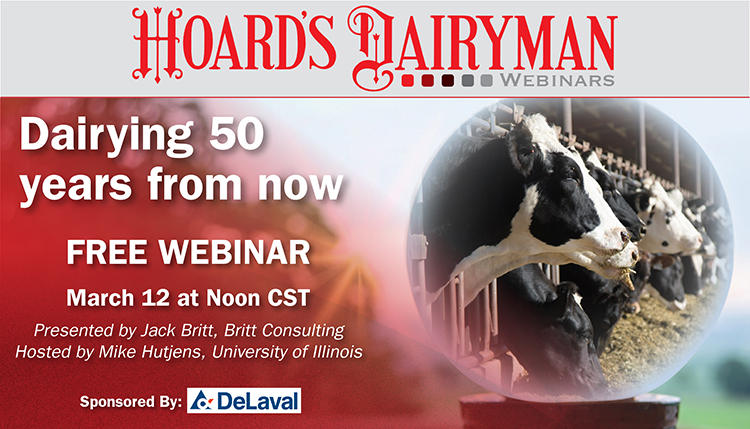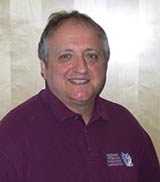
What will dairy look like in the future? It was that question that spurred dairy consultant Jack Britt to collaborate with a team of experts to examine dairying in the future. These individuals include nutritionists, dairy consultants, reproductive specialists, milk quality professionals, and genetic thought-leaders. Their work is ongoing as new discoveries alter the way dairy cows are managed. He presented “Dairying 50 years from now” as the monthly Hoard’s Dairyman webinar.
They made the following predictions.
The population growth in Asia and Africa will be huge in the coming years. When the U.S. milk supply is exported, it won’t be in fluid form, but in shelf-stable packaging. With the tremendous growth projected in these two areas, the U.S. needs to think about and ask our potential customers what foods will they want. That information will direct the pathway for future dairy products to be exported, and prepare a sustainable market moving forward.
And why will dairy continue to be a stronghold in the diet? Other than its nutritional benefits, dairy farming is a very efficient use of land when comparing area needed per gram of protein produced. That is an advantage over other foods and dietary lifestyles.
However, in order to sustain crop production, water is needed in large volumes. Over time, the changes in climate have and will continue to impact access to water. Britt predicts a migration of food producing entities from the West and Southwest to migrate in a northeast pattern, concentrating in the Midwest where water is more readily available.
Genetically, cows have the ability to produce large volumes of milk and the trend of increased production will continue. However, Britt recognizes an imbalance between components in milk and the domestic utilization of those solids. Looking ahead, the fat and protein in milk will be a driver in the marketplace.
Technology will include more data collection sites and the ability to synchronize their functions to work together. This will also drive the number of cows per worker to a higher plane.
Britt foresees larger herd sizes, as the current trend clearly indicates, but he forecasts that farms will be working together and sharing facilities and feed centers. There will be a need for improved biosecurity and shared protocols for this cooperative effort to take hold.
Crop production will also see changes. With an eye on the environment, lower nitrogen levels will be needed by the crops of the future. He predicts there will be varieties of corn with a three to five year life span with annual harvesting.
The dairy cows of the future will be slightly smaller and leave less of an environmental footprint. Desirable genes will propagate at a faster rate through gene editing.
Genomic testing has already produced a significant improvement in dairy cattle fertility and health traits since its inception in 2009. Additionally, we will better understand the role genetics play in performance and the result of epigenetics (environmental impact on genetic expression).
While each cow or heifer is an individual animal, Britt challenged listeners to think of the entire herd as one unit, like a colony of bees, a flock of starlings, or a collection of termites. Managing and understanding the one unit as a “superorganism” is a new mindset that many will soon embrace.
Learn more about what the future may hold for dairy by watching the 45-minute presentation and listening to the questions from attendees that followed. The webinar has been archived on our website and was sponsored by DeLaval, Inc.

Join us next month
The webinar “There’s a new calf killer in town” will be presented on Monday, April 9, at noon (Central time).
Veterinarians Donald Sockett, Rachel Klos, and Jason Lombard will discuss what producers should know about the Salmonella Heidelberg outbreak in humans and cattle and the management practices associated with its introduction and spread in a herd. The webinar is sponsored by Land O’Lakes Animal Milk Products.
Register at www.hoards.com/webinars.

The author is the online media manager and is responsible for the website, webinars, and social media. A graduate of Modesto Junior College and Fresno State, she was raised on a California dairy and frequently blogs on youth programs and consumer issues.











